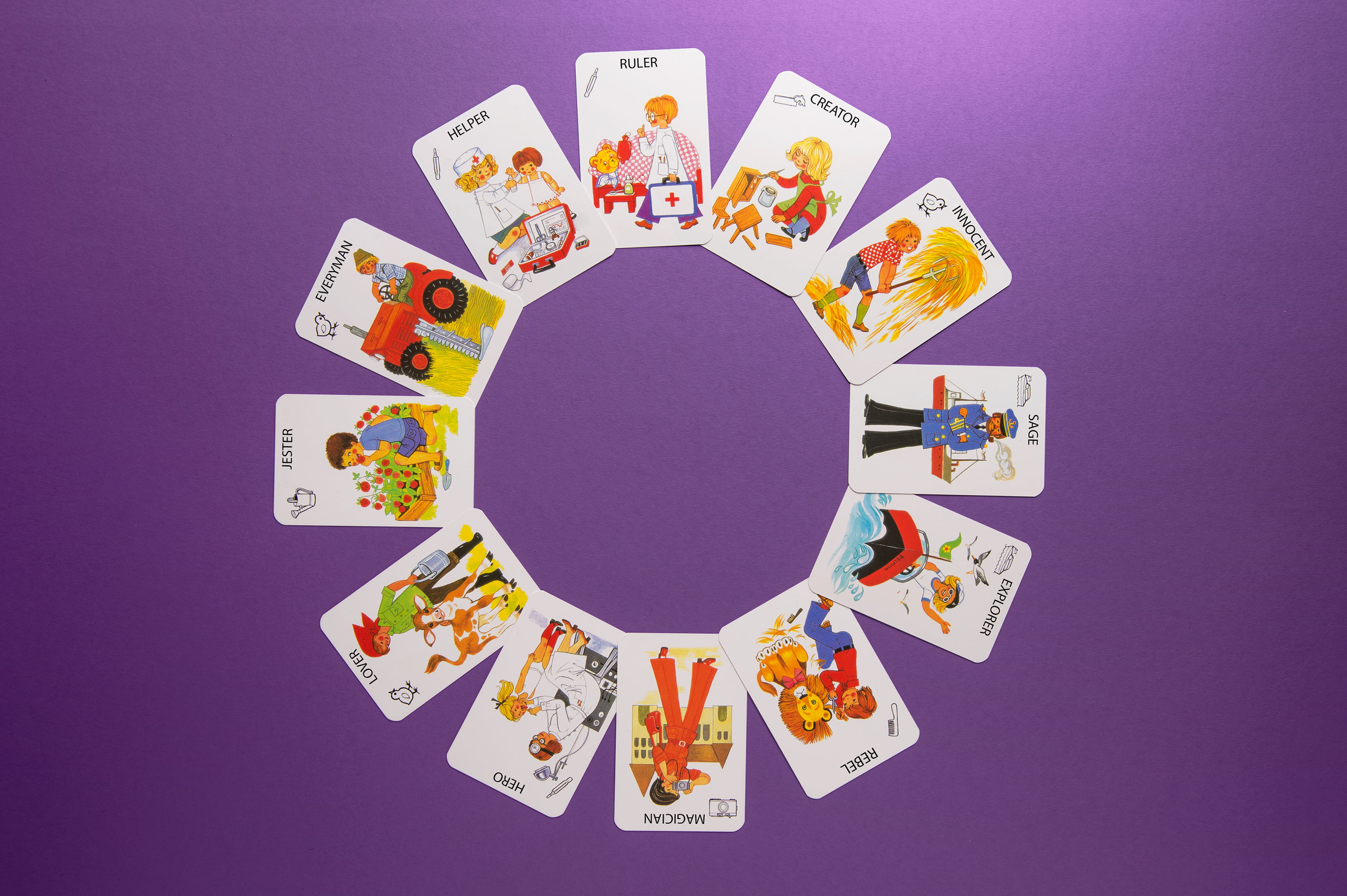
Play your card
The Hero, the Ruler, the Jester. Archetypes can be powerful tools when building a brand. Facebook and Google have proved just how powerful.
How did two of our times’ strongest brands build their success? Grown out of American college campuses, with organizations packed with engineers, Google and Facebook have achieved iconic status over a short period of time in virtually all parts of the world – creating strong brand positions without spending vast amounts on marketing.
An obvious answer to these questions is that Facebook and Google have created unparalleled digital experiences that are hard to ignore for anyone exposed to them. They have certainly faced many competitors, but they have prevailed through consistently delivering on the most important criteria of their categories. But their brands also show strong archetypical traits, and that helps explain their consistency and global appeal: Iconic brands often play on archetypical references, and even though a lot of them are very complex and multifaceted, the most iconic ones are those that seem to be concentrated on just one.
“We can go back to basics”
Archetypes are powerful symbols, roles, characters and stories that transcend time and culture. Or as Carl Jung explained: “forms or images of collective nature which occurs practically all over the earth as constituents of myths and at the same time as individual products of unconscious origin.” We can say that we all know them and understand their meaning. And it makes a lot of sense when you think about it: in India, Denmark and Uganda, people will understand the archetype of the Hero, the Mother or the Ruler. At the simplest level, we all understand the various symbols connected to them. Facebook and Google have been consistently projecting the most important features of their archetypes and have brought them into this unknown landscape of the Internet.
Facebook’s core
Facebook presents the same interface to everyone, encouraging you to be open and honest, celebrating participation and ensuring that you are connected at all times and on all possible devices. At the core of the Facebook brand you find this complementary connection to the elitist origins of the product: the Harvard campus. Facebook was never intended as an opposition to the established structures of social life, it was always about creating a positive, engaging and simple way of just being a person. The most prevalent symbol of this thought is the “like” button – a brutally simple way of “paying it forward”. Facebook was, and still is, a social brand. It is always there for you and that is the true value to the The Everyman archetype.
Google is founded on an idea that you can create a better reality for yourself right now – the Internet is easier to use, safer and less complicated in Google’s sphere. The brand has so many archetypical traits of the Innocent that they are hard to ignore: Often a simple, almost naive user interface that was in stark contrast to the chaotic, stereotypical and technological competitors at the time, a name and logo that seems childish and welcoming (even the two O’s can be argued to give deep references to the eyes of a small child – a symbol also pointed to the face of the Volkswagen Beetle), the “I’m feeling lucky”- button – showing us how easy it is to have a better search experience when you just trust in exploration, the “Don’t be evil” motto…
Even though their main business is search and the advertising that comes with it, Google’s sister brands or larger projects gives an important clue too: Calico – a company that is said to basically be set out to cure death, Google Books – a project to scan and make available all books in the world naively undermining the system of intellectual property and thereby the motivation for most to write and distribute books, Project Loon – balloons hovering over Africa, providing internet access. These projects are the expressions of a company that feel that they can do it all – and instinctively we all understand how this makes sense for them. It would not make sense for a brand like IBM or Hewlett Packard, not even Apple.
It demands discipline
All this doesn’t mean that they aren’t truly business driven. And their competitors would have much to say about the true impact of their businesses. But the power of their archetype brands overtakes this aspect in our minds. It also means high risk and deep crises when they act in a way that contradicts our expectations of them being the open or honest Everyman or the Innocent.
The conscious usage of archetypical symbols or traits demands a lot of discipline from a company. And that is probably where Facebook and Google show their biggest strength when it comes to nurturing their powerful brands: it is not because they have had extensive brand consulting from the start of their companies, in fact, I think it is safe to say that they have just acted out, creating products and services that are in tune with their deeper meaning and organizations. Remember, their product is their communication. And just as nature and markets have a tendency of shaping its artifacts and culture through almost evolutionary measures, so have these brands been shaped by their first bursts of success and their failures.
Marketers have a tendency of adding layers of complexity to their brands, either to make them more current or to adapt them better to the society they operate in. Google and Facebook, together with other global digital brands like Uber (the Ruler), Amazon (the Explorer), Snapchat (the Jester) are showing us that we can go back to basics. But this requires that products and communication are created as expressions of the same core. And that core consists of stories, patterns and characters known as archetypes. Marketers need to fully understand their brand’s archetype to be able to effectively execute compelling, emotional and consistent communication over time.